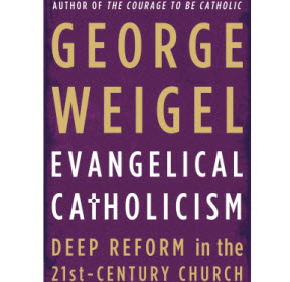By Christopher Gunty
editor@CatholicReview.org
“Rebuilt: Awakening the Faithful, Reaching the Lost, Making Church Matter” by Father Michael White and Tom Corcoran. Ave Maria Press (Notre Dame, IN, 2013). 320 pp; $16.95.
Some 15 years ago, at a large outdoor arena in suburban Phoenix, a visiting bishop addressed a crowd of faithful during a celebration in advance of the jubilee year. He asked the congregation, “How many of you belong to a great parish?” The whole audience responded in the affirmative by clapping.
He waited for the applause to die down and then said, “I doubt it.” An audible gasp went up as the 18,000 gathered collectively drew in their breath. The bishop then explained that a great parish was one that had great liturgy and educational programs, served others, attracted new members to Christ and in general was the kind of place that others in the community, even non-Catholics, say, “What are those people doing that makes them so joyful? I want to be a part of that.”
As he outlined the criteria for a “great parish,” I began to realize that perhaps a half dozen parishes in that diocese that fit his description. Most parishes were doing a good job, admirable even, but they were not the kind of place that drew the attention – and attendance – of inactive Catholics or those of other denominations.
This is the kind of parish that faced Father Michael White when he was appointed pastor of Church of the Nativity in Timonium in July 1996. He was joined a year later by Tom Corcoran as the parish’s youth minister. Working together, they found a parish that just was not working very well. It would not have been considered a “great parish” by the standards of good liturgy and attracting new parishioners.
In “Rebuilt,” a book released in late February, Father White and Corcoran detail their frustrations in the early years to figure out what wasn’t working and their efforts to find new ways to minister and evangelize.
In the book, the pair talks about a parish event, “Family Friendly Fridays,” that displayed the “consumer culture” that had enveloped the parish. The annual Lenten series featured dinner, child-care, after-dinner entertainment and a speaker, all of that bookended by Mass and Stations of the Cross. It was free of charge to attend, including dinner. At one point, when people complained about the food (at the free dinner, no less), the staff realized they had no idea what the purpose of the program was. “It was well-attended, but we weren’t getting the result we wanted,” Corcoran said in an interview a couple weeks before the book’s release. “It wasn’t transforming people. … We weren’t seeing people being made into disciples.”
“Rebuilt” emphasizes the parish’s attempt to promote discipleship in everything. Corcoran notes that the staff members try to focus on a line from Pope Paul VI: “The Church exists to evangelize.” With a greater attention to the New Evangelization as promoted by Blessed Pope John Paul II and retired Pope Benedict XVI, the parish is trying to create an environment where people are welcome.
That environment starts before people even get into the church – out in the parking lot. If visitors or newcomers find the parking lot a hassle, they don’t come into the church open to the word of God. “If people are annoyed and frustrated, they won’t hear the message,” Corcoran said. This extends also to greeters and having substantive children’s programs available “so parents can be together for an hour to experience the Word and the Eucharist.”
Through research and other methods, the parish staff determined its “target market,” a guy named “Timonium Tim,” who, though baptized and raised Catholic, likely would rather spend Sundays watching or participating in sports than going to Mass. They realized that if they could get “Tim” into the pews, he would bring his family with him, since a mom with kids might go to church without the dad, but if the dad goes, he usually won’t go without the whole family.
“Every community is different,” Corcoran notes, “but there will be some similarities.” The key, the book notes, is for each community to realize who its target “person” is, and craft its effort to bring that person, and others like him or her, through the doors.
The weekly message – the Nativity term for the homily or sermon – and vibrant music together reinforce the key points of the season’s Gospels for those who attend.
“Rebuilt” is written primarily for professional parish staff members, because it has practical “You Can Do This” sections at the end of each chapter. Supplementary videos and other resources are available on the companion website, rebuiltparish.com.
Catholics in the pew may benefit as well from learning what it takes to be an involved parishioner and active evangelizer. Some may read it and pass it along to their pastor or parish council members, along with a pledge to volunteer to help implement some of the suggestions.
Corcoran notes that he and Father White acknowledge their specific tactics won’t necessarily work in every parish, but that the keys – music, message and ministry – can dramatically affect any parish and help bring new disciples to Christ.
Copyright (c) March 16, 2013 CatholicReview.org


